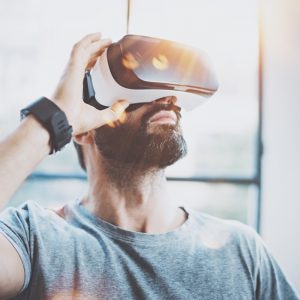
Dreams vs. (Virtual) Reality in Education
Today’s students have been exposed to technology since birth. They use it at home, with friends and at playtime, yet, in many cases, the educational system lags behind. If students continue to be taught in the classroom with traditional methods — textbooks, standardized testing etc. — they will also continue down the path of becoming less and less interested. Students must use their creativity, imagination, and be inspired to learn. Educators should be exploring new technology and its potential to inspire and engage the students for the creation of a better learning environment.
One such way schools across the world are doing this is through Virtual Reality (VR) Learning — the use of computer technology to create a simulated environment. Unlike traditional user interfaces, VR places the user inside an experience. Instead of viewing a screen in front of them, users are immersed and able to interact with 3D worlds.
Just a few years ago, the thought of VR was just a dream, yet now it is becoming a reality. In 2014, VR was a 90-million-dollar market, mostly within the gaming industry, but by 2018, it is expected to increase to a 5.2-billion-dollar market.
Benefits of VR in Education
- The visualization and the outstanding photos available put students in an environment they cannot get in a traditional classroom
- VR engages students and makes their learning more interesting and fun
- Increases participation with students — even students that were previously disengaged tend to participate when using VR technology
- Improves the overall educational experience by allowing students to get an up-close and personal look at what they are learning — a medical student can use VR to see inside the human body or a history student can take a tour of a battlefield from wars long since past
- Eliminates the language barrier as students can learn from all around the world and lessons can be interpreted in all different languages
Drawbacks of VR in Education
- Lack of other human connections, at times it is just the student and the VR headset
- In a classroom, a student can stop and ask questions or talk to fellow students. In the VR world students would have to follow the program or app and at times it is not flexible
- Functionality of the device can be a problem — when it breaks, the student’s learning is interrupted
- This technology is a lot like video games, and even though educational, it can be addictive
- Cost of VR in education is the biggest drawback to this new technology as schools are not able to afford it
Future of VR in Education
- Currently, headsets cost, on average, approximately $2,000 each, but Microsoft and others are working on more affordable options and are expected to debut a headset later this year that will cost about $299 each and will plug into a desktop PC
- Hand controllers add to the interactive experience of the headset and most recommend this technology. Microsoft and Samsung are working on hand controllers that work with the headsets and selling them as a set for $399, which will be more affordable for schools
- 360-degree cameras will be used to allow students to create projects and content to share what they have learned with other students
- Facebook will be launching Facebook Spaces later this year to enhance students’ learning environment. It will allow students to join virtual clubs, tutoring sessions and study groups which will enhance students’ learning potential
- Nearpod will offer VR lessons to provide teachers another tool for teaching their students. Nearpod has over 100 ready-to-teach lessons that include objectives, activities, questions, polls and quizzes, and will work with any smartphone
- Virtual Reality Education Apps are the newest trend which will allow students access to VR through their smartphones. This technology will give students access with little cost to schools, making it readily available to all students with the potential to change education forever
Receive the latest industry insights from the evōk team in your inbox by signing up for the evoker, our monthly newsletter or contact us to explore ways we can partner.